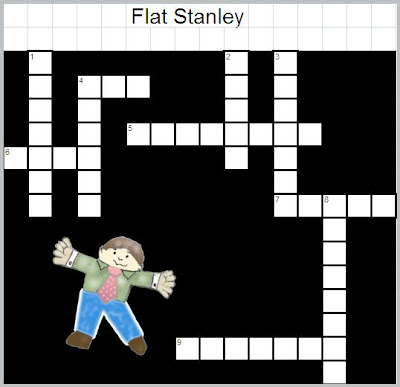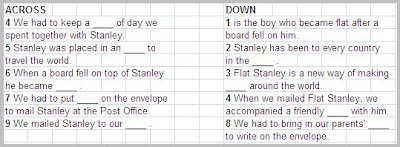
My lesson plan was designed into two parts, Part 1: From Saipan To (The Destination) to be completed by the students and sent with Stanley, and Part 2: From (The Destination) to Saipan, to be completed by the recipient and be sent back with Stanley to Saipan. After I had the students be introduced to Stanley by reading the book Flat Stanley, I walked through each step of completing the Part 1 section with the students. On the first day, I explained to the students the general purpose and layout of the project, and we started to work on filling out Question and Answers sheet about Stanley, assigned homework to take Stanley around for a day and keep a time log of what you did with Stanley the whole day, and created our Stanleys. On the second day, we completed our Stanley workbook by filling out the journal log, writing a friendly letter to the recipient and sealing our envelopes! The students were extremely hard workers and we were able to get everything done in two 90 minute class periods!:)
I absolutely adored the small yet talented 6th grade class of Ladera, and all in all we had a blast together making our Stanleys, interviewing each other, taking pictures and sending him out. The class also created a life-size Stanley (by tracing a first grade student on a big construction paper!) and hung it beautifully outside the classroom door (the first scene of the video). The students were very welcoming to me as "Ms. Judy," and although it was a very short time that we spent together, the small classroom environment made me feel like I was at home. So a quick shoutout of Thanks! and I miss you! to the wonderful 6th grade class at Ladera!
The next time in planning and guiding a Flat Stanley Project, I hope I can get to set aside a special time for the project all throughout the semester. Although we were able to get Stanley made and sent out in just two class periods, I feel that I could have integrated more Language Arts into the project in reading and writing about Stanley and his travels, and also would like to have sent Stanley to several different parts of the world.
Wow- I learned so much from this experience that I really don't know where to start! I think this Service Learning project ties in perfectly with the class as it deals with using technology directly in taking a log in your classroom, and I learned so much about video clips, YouTube, blogging, and other components related to this project through this Service Learning. I was only able to use a few, but I highly recommend for future students to integrate as much software and technology you can in completing this Service Learning project for a richer experience with technology for both you and your students. The Flat Stanley project itself is phoneminal - the idea of sending Stanley all over the world and having him sent back with letters, logs and pictures of his travels is a great way to get the students connected with the world, even from the tiny island of Saipan. This project definitely takes penpals to a next level, and I hope more schools will be able to join the project and help the students of the CNMI explore the world!:)
Click here to see pictures from the Flat Stanley Project.
The following is a video collaboration of the project.









 God has blessed me tremendously with many, many best friends in life, and I dedicate this blog, my passion for teaching, and my life as a teacher to all my best friends that have become a part of who I am today - Ms. Judy :)
God has blessed me tremendously with many, many best friends in life, and I dedicate this blog, my passion for teaching, and my life as a teacher to all my best friends that have become a part of who I am today - Ms. Judy :)